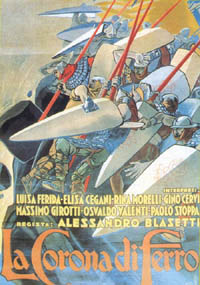
Ossessione is a 1943 Italian crime drama film directed and co-written by Luchino Visconti, in his directorial debut. It is an unauthorized and uncredited adaptation of the 1934 novel The Postman Always Rings Twice by American author James M. Cain, and stars Clara Calamai, Massimo Girotti, and Juan de Landa in the leading roles. It is often considered to be the first Italian neorealist film, though there is some debate about whether such a categorization is accurate.
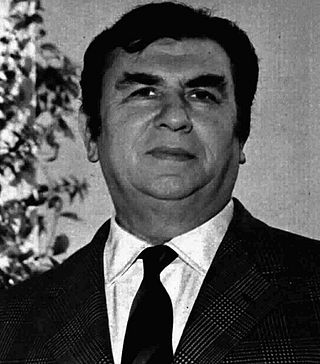
Luigi Cervi, better known as Gino Cervi, was an Italian actor. He was best known for portraying Peppone in a series of comedies based on the character Don Camillo (1952–1965), and police detective Jules Maigret on the television series Le inchieste del commissario Maigret (1964–1972).

The Witches is a 1967 commedia all'italiana anthology film produced by Dino De Laurentiis in 1965. It consists of five comic stories about witches, directed by Luchino Visconti, Franco Rossi, Pier Paolo Pasolini, Mauro Bolognini and Vittorio De Sica. The film features Silvana Mangano; Clint Eastwood appears in the final story. It was the last film starring Totò to be released in his lifetime.

Telefoni Bianchi films, also called deco films, were made by the Italian film industry in the 1930s and the 1940s in imitation of American comedies of the time in a sharp contrast to the other important style of the era, calligrafismo, which was highly artistic. The cinema of Telefoni Bianchi was born from the success of the Italian film comedy of the early 1930s; it was a lighter version, cleansed of any intellectualism or veiled social criticism.

Luisa Ferida, real surname Manfrini, was an Italian stage and film actress. She was one of divas in Italian cinema during decade 1935–1945 and she was the highest paid movie star of that period. The actress was famous as a films diva and she is remembered for her tragic death; in fact during the period of anti-fascist vendettas, immediately after Italian Civil War, she was assassinated, as was later proved by the Milan Court of Appeal, by shooting following a summary trial carried out by some partisans: she was shot with her lover, the actor and member of Decima Flottiglia MAS Osvaldo Valenti, as accused of alleged and hypothetical participation in war crimes and torture in connection with so-called Koch gang, facts of which she was then deemed innocent after the war. Therefore a war pension was allocated to the mother, who had no other source of income.

Massimo Girotti was an Italian film actor whose career spanned seven decades.
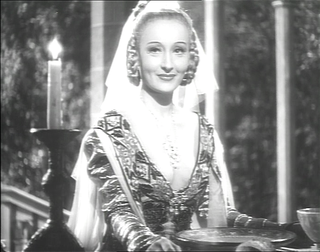
Clara Calamai was an Italian actress.
The Nastro d'Argento is a film award assigned each year, since 1946, by Sindacato Nazionale dei Giornalisti Cinematografici Italiani, the association of Italian film critics.
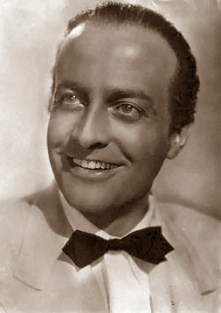
Osvaldo Valenti was an Italian film actor. Valenti starred in several successful Italian movies of the late 1930s and early 1940s, such as the famous The Iron Crown and The Jester's Supper. He appeared in more than 50 films between 1928 and 1945. He and his lover, Luisa Ferida, were executed by partisans in Milan, Italy, due to their links with Fascism. Their story was portrayed in the 2008 film Wild Blood.
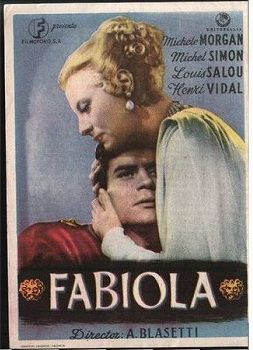
Fabiola is a 1949 Italian language motion picture historical drama directed by Alessandro Blasetti, very loosely based on the 1854 novel Fabiola by Nicholas Patrick Wiseman. The film stars Michèle Morgan, Henri Vidal and Michel Simon. It tells the story of the Roman Empire in which Christianity is growing around the 4th century AD. An unofficial remake, The Revolt of the Slaves, was released in 1960, with Lang Jeffries and Rhonda Fleming, only with Rhual's name changed to Vibio.

Un giorno nella vita is a 1946 Italian war film directed by Alessandro Blasetti. It was entered into the 1946 Cannes Film Festival. American title: "A Day In the Life". This film was screened in 2009 at the Film Society of Lincoln Center's retrospective "Life Lessons" Italian Neorealism and the birth of modern cinema.

A Free Woman is a 1954 Italian melodrama film directed by Vittorio Cottafavi. The film's sets were designed by the art director Dario Cecchi. In 2008, the film was included on the Italian Ministry of Cultural Heritage’s 100 Italian films to be saved, a list of 100 films that "have changed the collective memory of the country between 1942 and 1978."
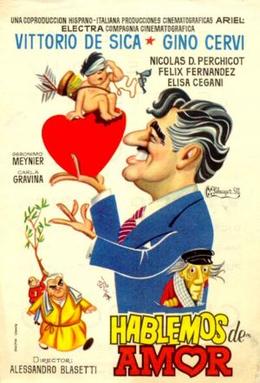
Amore e chiacchiere, internationally released as Love and Chatter, is a 1958 Italian comedy film directed by Alessandro Blasetti. It is based on a Cesare Zavattini's play with the same title.

An Adventure of Salvator Rosa is a 1939 Italian historical adventure film directed by Alessandro Blasetti and starring Gino Cervi, Luisa Ferida and Rina Morelli. It is set in seventeenth century Naples, then occupied by Spain, where a famous artist celebrated for his paintings of the rich leads a double life as a secret defender of the poor and oppressed.

Ettore Fieramosca is a 1938 Italian historical film directed by Alessandro Blasetti and starring Gino Cervi, Mario Ferrari and Elisa Cegani. It is adapted from the 1833 novel of the same title by Massimo D'Azeglio, based on the life of the 16th century condottiero Ettore Fieramosca.

Aldebaran is a 1935 Italian drama film directed by Alessandro Blasetti and starring Gino Cervi, Evi Maltagliati and Gianfranco Giachetti. The film was a naval melodrama, an attempt by Blasetti to make a more commercial film following the difficulties encountered with the propagandist The Old Guard (1934).

The Jester's Supper is a 1942 Italian historical film directed by Alessandro Blasetti and starring Amedeo Nazzari, Osvaldo Valenti and Clara Calamai. It was based on a play of the same title by Sem Benelli, which had later been turned into an opera by Umberto Giordano. Like the play, the film is set in the 15th century Florence of Lorenzo the Magnificent and portrays a rivalry that leads to a series of increasingly violent practical jokes.

The Innkeeper is a 1944 Italian historical comedy film directed by Luigi Chiarini and starring Luisa Ferida, Armando Falconi and Osvaldo Valenti. The film is an adaptation of Carlo Goldoni's 1753 play The Mistress of the Inn, one of a number of times the work has been turned into films. It belongs to the movies of the calligrafismo style.

The Ten Commandments is a 1945 Italian drama film directed by Giorgio Walter Chili. It features an ensemble of Italian actors in episodes based on the Ten Commandments.
Harlem is a 1943 Italian sports crime film directed by Carmine Gallone and starring Massimo Girotti, Amedeo Nazzari and Vivi Gioi. It was shot at the Cinecittà Studios in Rome. The film's sets were designed by the art director Guido Fiorini. The former world heavyweight champion Primo Carnera appears in a small role. It is also known by the alternative title of Knock Out.
